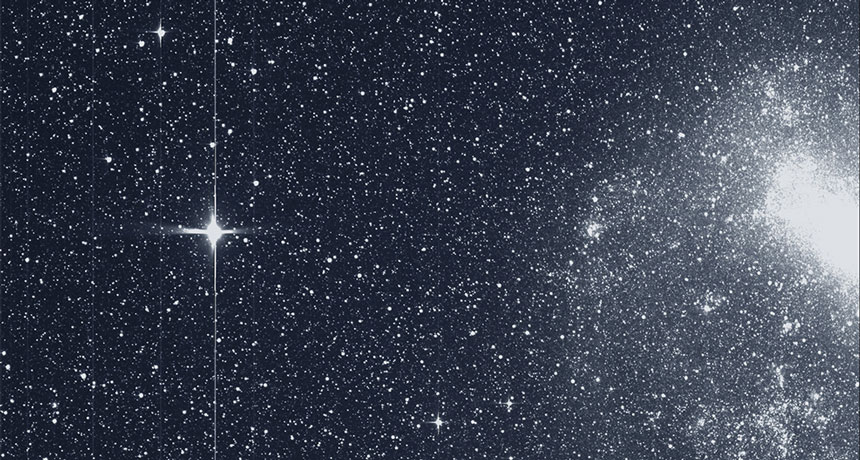The TESS space telescope has spotted its first exoplanet
Pi Men c’s size and mass suggest it may have lots of water

BRAVE NEW WORLDS The TESS exoplanet telescope’s first science image includes this snapshot of the southern sky, plus three more taken with TESS’s other three cameras. The Large Magellanic Cloud, a small galaxy that orbits the Milky Way, is on the image’s right. The star R Doradus is so bright it left a spike of light streaking across the image.
TESS/MIT/NASA







